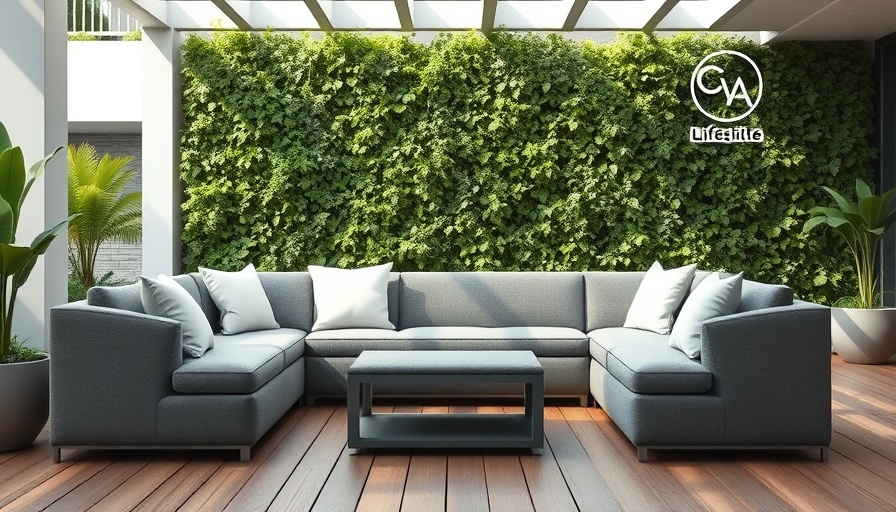
Transform Your Commercial Space with Artificial Ivy Walls
Artificial ivy walls have burst onto the scene as a popular choice for both residential and commercial spaces. Businesses increasingly embrace these low-maintenance and visually appealing solutions. With their evergreen appeal, artificial ivy panels can be customized to fit any design aesthetic, making them an attractive option for commercial properties.
Defining Characteristics of Artificial Ivy
One of the key advantages of artificial ivy is its year-round greenery. Unlike natural plants, which require proper sunlight and care, artificial ivy remains vibrant regardless of weather conditions. This feature is particularly valuable for commercial spaces, which often have to deal with fluctuating environmental factors. Furthermore, the ease of installation allows business owners to revamp their spaces without extensive renovations.
Simple Steps for Installation
Creating an artificial ivy wall is straightforward and can be accomplished in a few efficient steps:
- Measure the intended area to determine how many panels are necessary.
- Connect the panels by snapping them together.
- Secure the panels to the vertical surface using zip ties, gaffer tape, or a staple gun.
- For added creativity, mix and match different ivy panels or embellish them with additional artificial plants and flowers.
This quick and simple approach allows business owners to transform otherwise dull walls into lush vertical gardens or stunning accent walls.
Maintaining Your Artificial Ivy Wall
While maintenance is simpler compared to natural plant walls, it is still crucial. To keep your ivy wall looking its best:
- Remove any large debris regularly.
- Dust the surface with a feather duster or cloth to prevent buildup.
- Clean the panels using a gentle non-abrasive cleaner, followed by a wipe with a damp cloth.
- For outdoor installations, monthly cleanings are recommended, while indoor installations may require less frequent attention.
This level of care ensures that the green wall continues to enhance the ambiance of the commercial space.
Innovative Indoor Applications
Artificial ivy walls can serve various purposes within commercial establishments:
- Branded photo walls at cafes and bars enhance the ambiance, providing patrons with an Instagram-worthy backdrop.
- Green walls in spas contribute to a calming atmosphere, helping to promote relaxation.
- Chic dividers can be used in restaurants, defining dining areas while adding aesthetic appeal.
- Signage walls in reception areas provide a welcoming touch to guests.
- Vertical gardens in breakout areas can lead to increased employee morale, promoting a positive work environment.
These applications illustrate how artificial ivy is not just decorative but can also enhance user experience in a commercial setting.
Creative Outdoor Installations
Artificial ivy walls are equally adaptable for outdoor use, delivering both color and texture to exteriors:
- Accent walls in outdoor dining areas or rooftop lounges uplift the atmosphere, making spaces more inviting.
- Artistic exterior walls can captivate visitors and create a memorable experience.
- Utilitarian upgrades, such as enhancing chain-link fences, can transform neglected areas into stylish features.
- Utility-hiding walls at hotels or community buildings help maintain aesthetic appeal while providing functional benefits.
This versatility allows businesses to creatively address various aesthetic and functional needs.
Embracing Sustainability
In today's eco-conscious market, the appeal of sustainable practices cannot be overstated. Artificial ivy walls offer a low-maintenance, long-lasting alternative to natural plants, providing a greener option without the associated upkeep. When making purchasing decisions, businesses can also consider sourcing environmentally friendly products, such as recycled materials or sustainably manufactured panels, to further their commitment to sustainable practices.
Take Action Today
If you’re ready to enhance your commercial space with vibrant, low-maintenance greenery, consider contacting Watersavers Turf for a free consultation. With their expertise in artificial ivy walls, they can help you choose the perfect solution for your property. Don’t miss the opportunity to create a captivating environment that sets your business apart!
 Add Row
Add Row  Add
Add 




Write A Comment